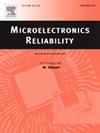Evolution analysis of mechanical behaviours of through‑silicon via under thermal cycling load
IF 1.6
4区 工程技术
Q3 ENGINEERING, ELECTRICAL & ELECTRONIC
引用次数: 0
Abstract
As the key interconnecting structure of high-performance 3D chips, through‑silicon via (TSV) is of great significance to improve the packaging efficiency and computing performance of chips. However, under the increasingly complex and severe service environment, the failure mechanism of TSV is increasingly becoming a key problem hindering the development of 3D chips in the future. In this study, based on the crystal plasticity theory and with the help of literature data, the plasticity constitutive considering thermal expansion coefficient and temperature dependent plasticity parameters is constructed to simulate the mechanical behavior evolution mechanism of TSV under thermal cycling load. Results show that the mean Cu grain area increases from 55.42 μm2 to 65.74 μm2 after thermal cyclic loading, and the mean misorientation angle decreases from 41.34° to 35.53° correspondingly. The stability at the grain boundary is lower than that inside the grain, which can be proof by the resolved shear stress distribution, shear rate distribution and slip resistance distribution in different slip system. This study can be regard as the basis for the reliability research in extreme service environments, and has certain reference significance for promoting the development of 3D chips.
求助全文
约1分钟内获得全文
求助全文
来源期刊

Microelectronics Reliability
工程技术-工程:电子与电气
CiteScore
3.30
自引率
12.50%
发文量
342
审稿时长
68 days
期刊介绍:
Microelectronics Reliability, is dedicated to disseminating the latest research results and related information on the reliability of microelectronic devices, circuits and systems, from materials, process and manufacturing, to design, testing and operation. The coverage of the journal includes the following topics: measurement, understanding and analysis; evaluation and prediction; modelling and simulation; methodologies and mitigation. Papers which combine reliability with other important areas of microelectronics engineering, such as design, fabrication, integration, testing, and field operation will also be welcome, and practical papers reporting case studies in the field and specific application domains are particularly encouraged.
Most accepted papers will be published as Research Papers, describing significant advances and completed work. Papers reviewing important developing topics of general interest may be accepted for publication as Review Papers. Urgent communications of a more preliminary nature and short reports on completed practical work of current interest may be considered for publication as Research Notes. All contributions are subject to peer review by leading experts in the field.
 求助内容:
求助内容: 应助结果提醒方式:
应助结果提醒方式:


